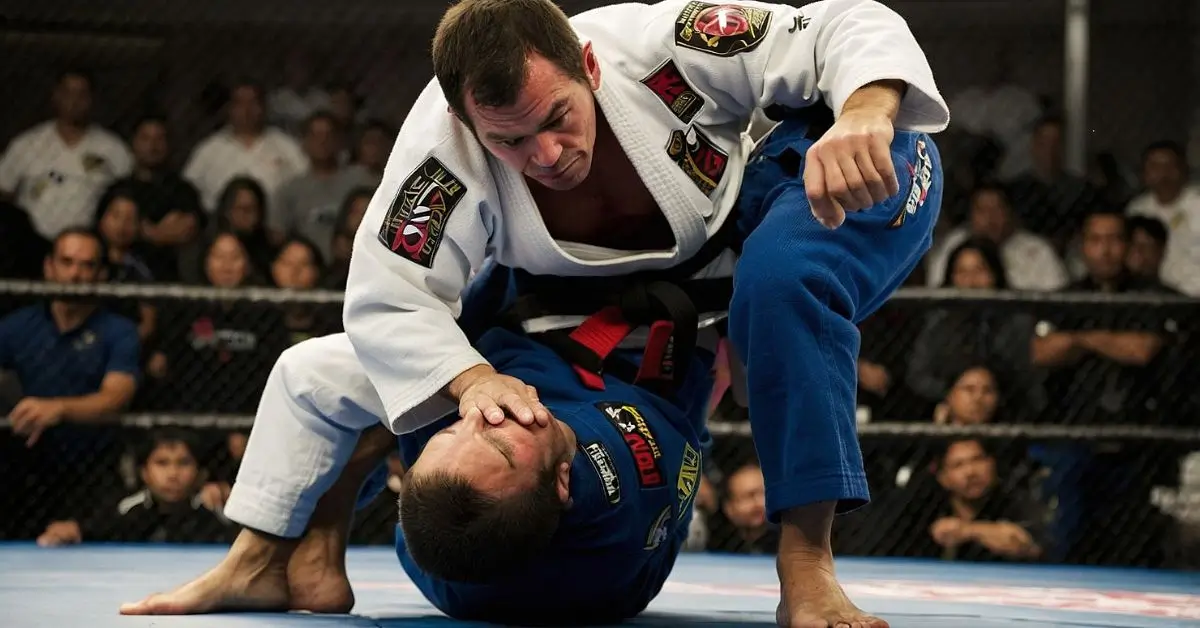Brazilian Jiu-Jitsu (BJJ) is one of the most challenging and rewarding martial arts in the world. It is known for its intricate techniques, emphasis on leverage and skill over brute strength, and its focus on ground fighting and submissions. For many practitioners, earning a black belt in BJJ is the ultimate goal—a symbol of mastery, perseverance, and dedication. However, unlike other martial arts where you may achieve a black belt within a few years, the road to a BJJ black belt is a long and rigorous one. The time it takes to achieve this rank can vary significantly depending on numerous factors.
In this article, we will explore how long it takes to achieve a black belt in Brazilian Jiu-Jitsu, the various stages of progression, the challenges one faces, and the mindset required to persevere through this demanding martial art. We will also discuss how training consistency, personal goals, the influence of instructors, and individual learning pace can impact the journey toward the coveted black belt.
Understanding the BJJ Belt System
Before diving into how long it takes to earn a black belt in BJJ, it’s important to understand the belt system itself. Brazilian Jiu-Jitsu has a belt ranking system that indicates the level of a practitioner’s expertise. The progression in BJJ is notably slower compared to other martial arts, reflecting the difficulty and depth of knowledge required to advance.
The Adult Belt System in BJJ:
- White Belt: The starting point for all BJJ practitioners.
- Blue Belt: Represents an understanding of basic techniques and principles.
- Purple Belt: A more advanced stage, where practitioners demonstrate solid technical ability.
- Brown Belt: Approaching mastery, brown belts refine their skills and focus on teaching.
- Black Belt: A symbol of proficiency and deep knowledge in the art.
It is common for practitioners to spend several years at each belt level, especially as they move from blue belt onward. Additionally, there are stripes awarded at each belt level to indicate progress between belts.
Average Time to Achieve a BJJ Black Belt
On average, it takes around 10 to 15 years to achieve a black belt in Brazilian Jiu-Jitsu. This estimate is based on consistent, dedicated training and adherence to a school’s curriculum. However, the timeline can vary widely depending on factors such as:
- Training frequency
- Individual learning speed
- The quality of instruction
- Physical conditioning and injury
- Time spent at each belt level
Unlike many other martial arts where students can earn a black belt in three to five years, BJJ places a strong emphasis on practical application and proficiency. In fact, some practitioners may take even longer than 15 years if they train less frequently, or if life circumstances interrupt their training.
Factors Affecting the Time to Black Belt
A. Training Frequency
One of the most important factors in determining how long it will take to reach a black belt in BJJ is how often you train. Practitioners who train five or six days a week will naturally progress faster than those who can only attend classes a couple of times a week.
B. Instructor’s Philosophy and School Standards
Each BJJ school and instructor may have different standards for promoting students through the belts. Some instructors may have more stringent criteria, requiring students to demonstrate mastery of a wider range of techniques and situations before advancing to the next belt level.
C. Injuries
Injuries are an unfortunate but common part of the martial arts journey. The intense physical demands of BJJ often result in wear and tear on the body. Major injuries can lead to months or even years away from the mats, delaying progress. Taking care of one’s health and managing injuries wisely is key to sustaining long-term training in BJJ.
D. Personal Learning Speed
Not everyone learns at the same rate. Some individuals are quick to grasp new techniques and concepts, while others take more time to internalize them. This is neither a good nor a bad thing—it simply means that each practitioner will progress at their own pace. The important part is consistency, patience, and a willingness to keep improving.
E. Competitive vs. Recreational Training
There are practitioners who approach BJJ as a hobby or recreational activity, and others who dedicate themselves fully to competition and winning titles. Competitors often spend more time on the mats and are pushed to sharpen their skills faster, but they may also experience more burnout and injuries due to the pressure of constantly being in peak form.
The Belt Levels: How Long Does Each Take?
A. White Belt to Blue Belt (1 to 3 years)
The transition from white to blue belt typically takes anywhere from one to three years. At this stage, practitioners are learning the basic positions, submissions, escapes, and defensive strategies of BJJ. The white belt phase is about survival and absorbing as much information as possible.
B. Blue Belt to Purple Belt (2 to 4 years)
Reaching the purple belt signifies that the practitioner has a strong grasp of BJJ’s fundamentals. Blue belts begin to refine their skills, learn more advanced techniques, and focus on chaining movements together. This phase requires more time to develop deeper technical skills, as well as to understand the principles of timing, leverage, and pressure. It’s not uncommon for practitioners to spend several years at blue belt.
C. Purple Belt to Brown Belt (2 to 4 years)
Purple belts are considered advanced practitioners. They are expected to have a solid command of both offensive and defensive techniques. The focus at this stage is on perfecting technique and starting to develop one’s own style or “game.” The progression from purple to brown belt can take anywhere from two to four years, depending on how frequently the practitioner trains and competes.
D. Brown Belt to Black Belt (1 to 3 years)
The brown belt phase is often considered the final polishing stage before achieving black belt status. Brown belts have a deep knowledge of BJJ and are often involved in teaching and mentoring lower belts. The jump from brown to black belt typically takes around one to three years, as the practitioner hones their skills to perfection and prepares to demonstrate a comprehensive understanding of the art.
The Black Belt: A Symbol of Mastery, Not the End
Achieving a black belt in Brazilian Jiu-Jitsu is a tremendous accomplishment, but it is not the end of the journey. In fact, many practitioners view the black belt as the beginning of true mastery. As a black belt, one is expected to continue evolving, learning, and teaching others. There are also degrees within the black belt ranking, indicating continued progression and contribution to the art.
A. Black Belt Degrees
In Brazilian Jiu-Jitsu, after achieving the black belt, practitioners can earn degrees (or “stripes”) on their black belt based on time and contribution to the art. These degrees reflect continued learning and teaching.
- First to Sixth Degree Black Belt: These degrees represent continued training and involvement in BJJ. Each degree is typically awarded every three years after earning the black belt.
- Seventh Degree Black Belt (Coral Belt): Awarded after around 30 to 35 years of training as a black belt, the coral belt is a prestigious rank that few reach.
- Eighth Degree Black Belt (Red and Black Belt): After many decades of dedication to the art, a practitioner may be awarded this prestigious rank.
- Ninth and Tenth Degree Black Belt (Red Belt): This rank is reserved for the founding members of Brazilian Jiu-Jitsu and is rarely awarded.
Challenges and Obstacles on the Road to Black Belt
The path to earning a BJJ black belt is not without its obstacles. Injuries, plateaus, mental burnout, and life commitments can all slow progress. However, many black belts will tell you that overcoming these challenges is what makes earning the rank so rewarding.
A. Injury and Physical Wear
Due to the intense physical nature of Brazilian Jiu-Jitsu, injuries are common. Whether it’s joint pain, muscle strains, or more severe injuries like torn ligaments, injury management is a critical part of the BJJ journey.
B. Mental Burnout
Training consistently for many years can take a toll on one’s mental health. Plateaus in progress can lead to frustration, while the pressure to keep improving can cause stress. Overcoming mental burnout requires a long-term mindset, focusing on the love of the art rather than just belt promotions.
Conclusion
Brazilian Jiu-Jitsu is a martial art that demands time, dedication, and perseverance. Unlike many other martial arts where belts can be earned relatively quickly, BJJ places a heavy emphasis on skill and practical ability, making the black belt a true symbol of mastery. Most practitioners take between 10 to 15 years to achieve this rank, with many challenges and obstacles along the way. However, those who stay the course will find that the lessons learned on the mats extend far beyond the martial art itself—they develop resilience, patience, and humility.
In the end, the journey to a black belt in BJJ is a deeply personal one, and each practitioner’s path is unique. Whether it takes 10 years or 20, the black belt is not just a reward for technique, but a testament to perseverance and the love of learning.











